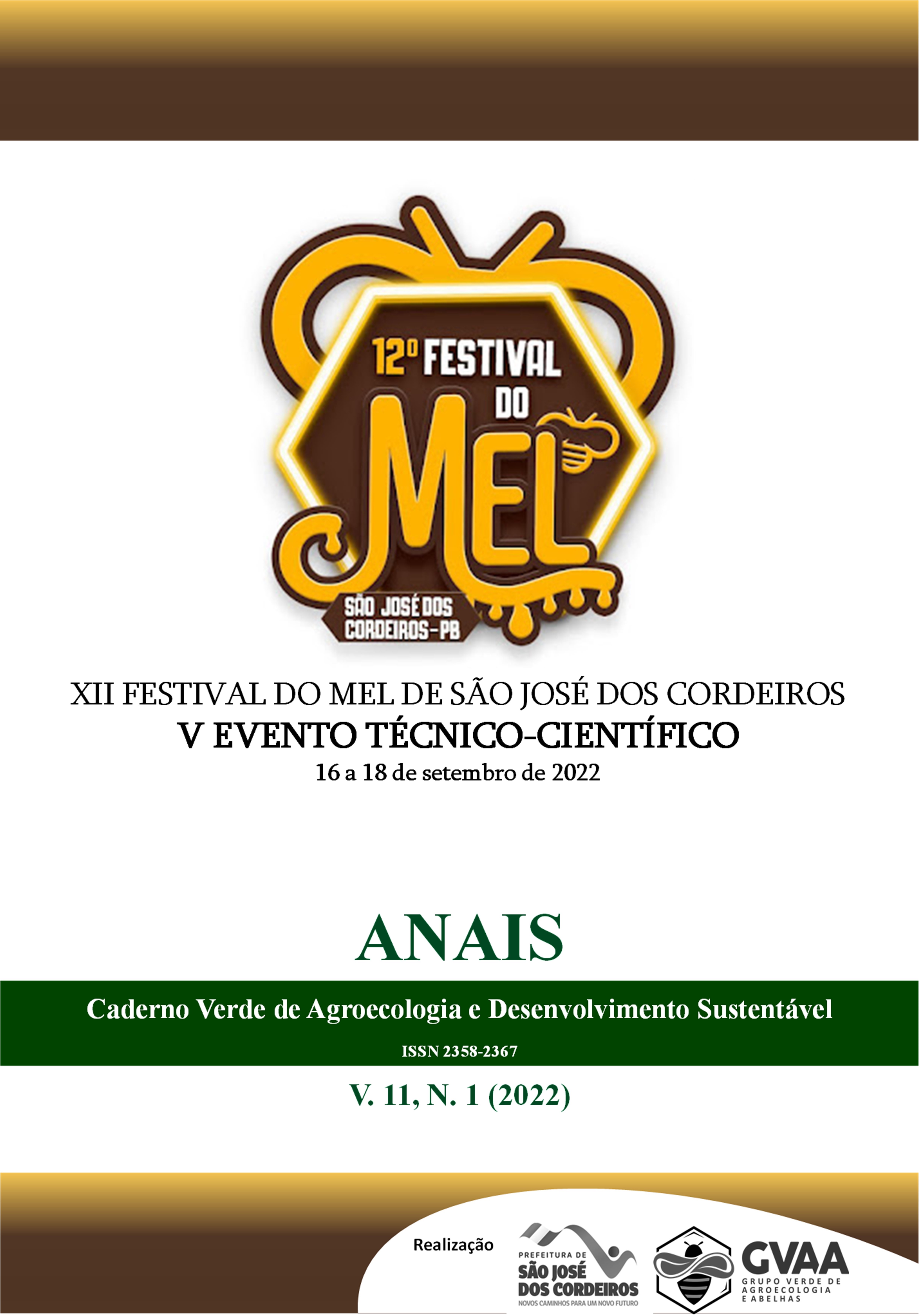Emergency of Ocimum basilicum L. seeds on different substrates in the Cariri region of paraibano
Keywords:
Basil, Physiological quality, ForceAbstract
Basil (Ocimum basilicum L.) is an aromatic plant belonging to the Lamiaceae family, popularly known as basilicão, basil, common basil, among others. It is considered a herbaceous, perennial species that blooms all year, and may also be known for its medicinal characteristics. Its cultivation is quick and easy, and propagation can be obtained by seeds, so it is important to have means to assess its physiological quality, as well as information on the requirements for its emergence regarding water, temperature, light and substrate. Thus, the objective of the research was to evaluate the influence of different substrates on the physiological quality of O. basilicum seeds in the region of Cariri paraibano. The work was carried out at the Laboratory of Plant Anatophysiology of CDSA/UFCG, where the influence of the following substrates was analyzed: (T1) Earth, sand and rabbit manure, (T2) Earth, sand and goat manure; (T3) land and rabbit dung; (T4) soil and goat manure and (T5) soil and sand in 1:1 proportions, totaling five treatments, where the following parameters were evaluated: emergence and emergence speed index. In each treatment, 100 seeds were used. The emergence test was carried out in a protected environment (uncontrolled conditions), in which the seeds were sown in trays containing the different substrates. Regarding the emergence data and emergence speed index, the soil and sand substrate provided the best results with values of 50% and 1.7 respectively, while the substrate, earth and goat manure, promoted the lowest results (20% and 0.51 respectively). Thus, the substrate sand and earth were considered more efficient for emergence, emergence speed index in seeds of O. basilicum in the region of Cariri Paraiba.
Downloads
Published
How to Cite
Issue
Section
License
Termo de cessão de direitos autorias
Esta é uma revista de acesso livre, em que, utiliza o termo de cessão seguindo a lei nº 9.610/1998, que altera, atualiza e consolida a legislação sobre direitos autorais no Brasil.
O(s) autor(es) doravante designado(s) CEDENTE, por meio desta, publica a OBRA no Caderno Verde de Agroecologia e Desenvolvimento Sustentável, representada pelo Grupo Verde de Agroecologia e Abelhas (GVAA), estabelecida na Rua Vicente Alves da Silva, 101, Bairro Petrópolis, Cidade de Pombal, Paraíba, Brasil. Caixa Postal 54 CEP 58840-000 doravante designada CESSIONÁRIA, nas condições descritas a seguir:
O CEDENTE declara que é (são) autor(es) e titular(es) da propriedade dos direitos autorais da OBRA submetida.
O CEDENTE declara que a OBRA não infringe direitos autorais e/ou outros direitos de propriedade de terceiros, que a divulgação de imagens (caso as mesmas existam) foi autorizada e que assume integral responsabilidade moral e/ou patrimonial, pelo seu conteúdo, perante terceiros.
O CEDENTE mantêm os direitos autorais e concedem à revista o direito de divulgação da OBRA, com o trabalho simultaneamente licenciado sob a Licença Creative Commons do tipo atribuição CC-BY.
O CEDENTE têm autorização para distribuição não-exclusiva da versão do trabalho publicada nesta revista.
O CEDENTE têm permissão e são estimulados a publicar e distribuir seu trabalho online (ex.: em repositórios institucionais ou na sua página pessoal) a qualquer ponto antes ou durante o processo editorial, já que isso pode gerar alterações produtivas, bem como aumentar o impacto e a citação do trabalho publicado.








